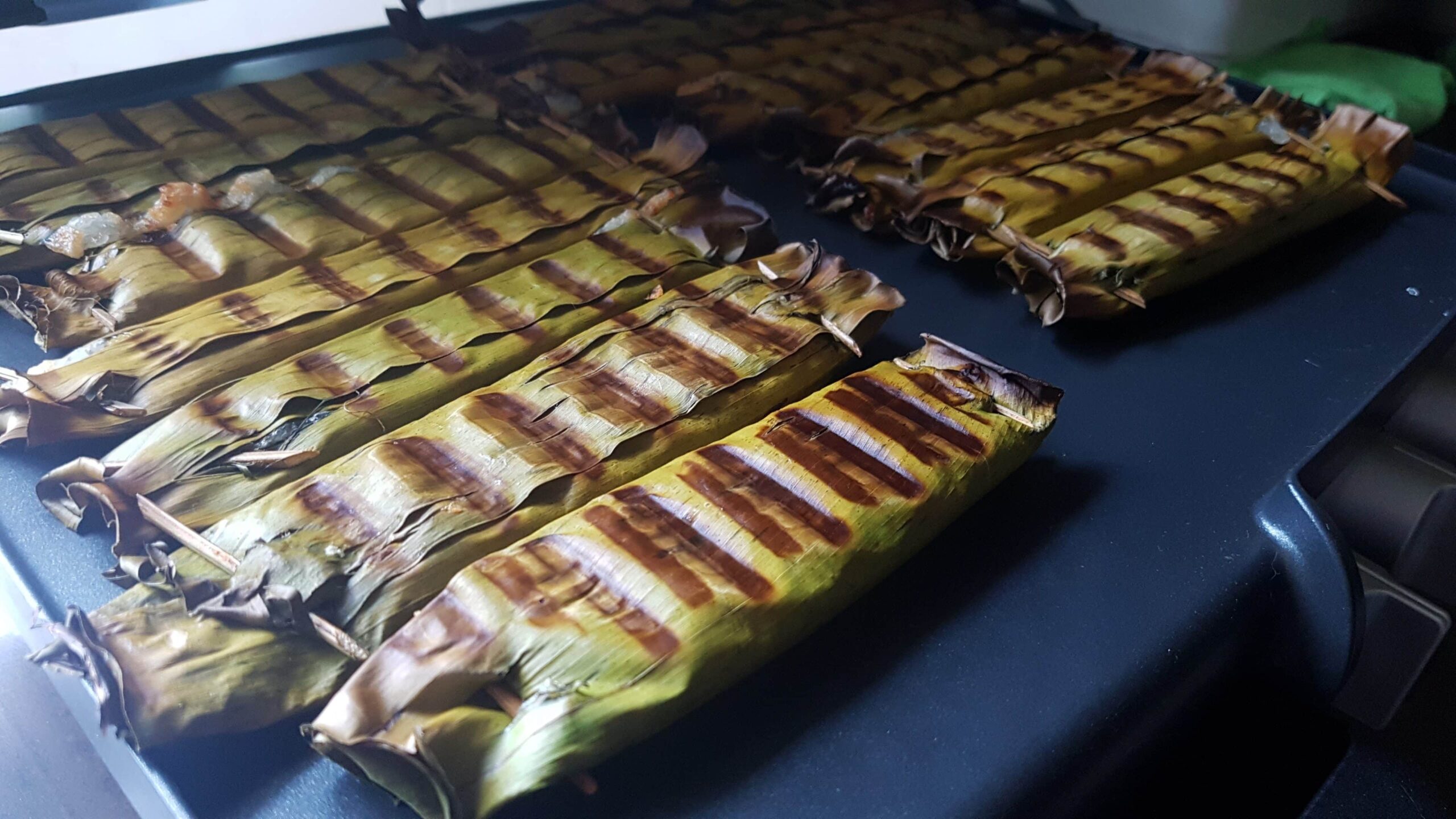Being from Terengganu, I grew up thinking fish is a natural, common ingredient in so many local favorites; nasi lemak with sambal ikan tongkol, karipap, pulut panggang (we call ’em pulut lepa)… but *of course* fish is the main ingredient!
Wait… you guys have nasi lemak with chicken rendang and *gasp* paru (beef lung)? Karipap kentang? What is this orange coconut nonsense in this pulut panggang?!! Well, imagine how shocked I was discovering what them West-coast folks are eating. This was probably when I was about 7 or 8 years old.
Anyway, fast forward to today, I really miss the East-coast pulut panggang with fish filling. On very rare occassions someone managed to find it here in KL and I would eagerly wolf them down, but they mostly turned out quite underwhelming. But we compromised anyway, because it was better than nothing.
Finally I thought, why not make it myself and serve it for Hari Raya? I looked around for recipes online, and combined with Kak’mbang’s knowledge and experience we managed to make a decent Terengganu-syle pulut lepa which Mummy and my aunties (all Terengganu natives) accepted as truly authentic.
Here it is, if you ever feel like having some Terengganu fare. Do note that this recipe makes a lot, so feel free halving it. Leftover fish filling can also be used in yummy Terengganu-style karipap.
Pulut Lepa Terengganu
Ingredients
- 4 large (about 850 grams) Indian mackerel (ikan kembung)
- 3 slices asam keping
- 1 tablespoon plus 1 and 3/4 teaspoons salt
- 3 tablespoons sugar
- 7 cups thick coconut milk, extracted from 2 coconuts
- 6 shallots, thinly slicedy
- 1-inch piece fresh ginger, thinly julienned
- 1 teaspoon fenugreek seeds (halba)
- 1 kilogram glutinous rice (beras pulut)
- Banana leaves, wiped clean
- Lidi skewers OR staples
Directions
In a large skillet, carefully place the fish. Add the asam keping, 1 teaspoon salt, and add enough water to partly submerge the fish.
Place the skillet over medium heat and bring the water to the boil. Cover and cook undisturbed, until fish are cooked through, about 15 minutes.

Remove from heat and set aside until cool enough to handle. Debone the fish and place the meat into a food processor.

Run the fish meat through the food processor until finely chopped.

In a large skillet over medium high heat, add the chopped fish meat and 2 cups coconut milk.

Cook, constantly stirring, until the coconut milk appears to have completely evaporated, 10 to 15 minutes.

Add the shallots, ginger and fenugreek seeds.

Add 1 tablespoon sugar…

…and 3/4 teaspoon salt.

Continue to cook, stirring constantly, until all the liquid has completely evaporated, 20 to 25 minutes. The indicator for me is when the hissing sound of the evaporation stops. Set aside.

In a large pot over medium heat, add the remaining 5 cups coconut milk, 2 tablespoons sugar, and 1 tablespoon salt. Stir to combine.
Add the glutinous rice and cook, covered and undisturbed, until all the liquid has evaporated and rice is fully cooked.
Spread the rice on a large tray and let cool.

Assemble the pulut panggang. Cut the banana leaf into 6-inch by 8-inch rectangles, about half an A4 sized paper.
Working with one piece of banana leaf at a time, add one generous tablespoon of rice. Using your spoon or a small rolling pin, flatten the rice lengthwise on the leaf.

Top the rice with 1 teaspoon fish filling.

Fold the bottom edge of the leaf over the rice, and roll tightly.

Using tiny skewers or a stapler, seal both ends of the wrapper.

Repeat for the remaining rice and filling, or until you run out of banana leaves.

Heat up your grill (I used my Breville electric grill). Grill the wrapped rolls until the leaves are dark brown, about 15 minutes.


Leave a Reply